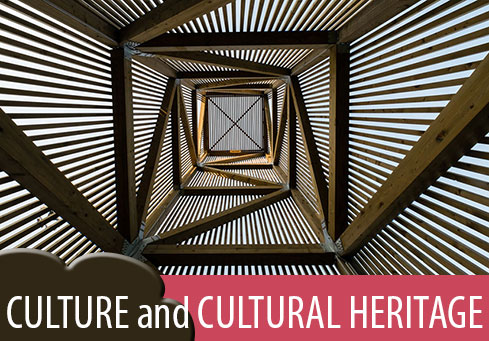Local Development Pilot Projects (LDPP) - Rupea-Cohalm micro-region, Romania
The Rupea-Cohalm region in the northern part of the Braşov county has a rural character with family-organised agricultural farms and very few non-agricultural economic activities.
Large oak forests, wide grazing lands and agricultural terrains cover this impressive hilly landscape with numerous villages around the town of Rupea: all of them characterised by a high density of vernacular architecture and famous for their fortified evangelical church assemblies and orthodox churches which demonstrate the religious and ethnic diversity of this territory. Orthodox Romanians, Roman-Catholic Hungarians live together with Evangelistic Saxons, sharing this region with people of Roma origin and other ethnic and confessional origins. These groups still practise their folklore, customs, crafts and organise traditional ceremonies and events. Most natural habitats are protected as NATURA 2000 sites, natural monuments, archaeological sites and memorial houses under specific status. Numerous NGOs, associations and private operators are active in launching initiatives and conducting projects for the protection and preservation of this rich and diverse natural and cultural heritage, to improve the infrastructure, to integrate the Roma families into community life, etc.
Programmes and initiatives are however often stopped due to unclear situations of ownership. The coordination between different activities is lacking; no synergies exist between projects; consequently no significant impact is seen on the region which is marked by a poor infrastructure, bad roads, numerous settlements without drinking water, a poor sewerage system, electricity or waste treatment; an area without public transport and therefore no workforce mobility. The high level of unemployment, especially among the Roma, which leads to stigmatisation, is almost as high as the employment rate. Farming is practised with outdated technical equipment. Local products do not have an adequate market. Reconversion programmes are lacking, so that many young people emigrate, leaving an ageing population behind. Natural heritage as local wealth is threatened by illegal constructions, uncontrolled forest exploitation and waste disposal. Historic monuments are in a state of serious degradation, often of collapse. Transformations and illegal interventions on traditional residences indicate the population’s desire to modernise at all costs but with a negative impact on the village’s traditional architecture. Craftsmanship is likely to be lost as young people are not interested in continuing these practices. There is a high risk of conflict between the traditional society and the expression of a relatively aggressive modernity.
The implementation of the Local Development Pilot Project in Romania was requested by the Ministry of Culture. Political commitments were secured (as part of the Council of Europe Regional Programme on Cultural and Natural Heritage in South East Europe). It was the responsibility of the Ministry of Culture to develop contacts and collaboration with other national institutions in order to set up the Interministerial Commission. The direct involvement of key ministries (Economy, Environment, Regional Development, etc.) was targeted as a factor of success for the project, due to its integrated approach of local and regional development based on cultural and heritage resources of territories.
Unfortunately, the Ministry of Culture had difficulties in mobilising other Ministries towards the general objectives of the project, particularly with regard to their financial contributions. Activities have consequently been delayed, limiting the promotion of practical results which could have been used for encouraging ministerial political interest. Electoral schedules (national or local) required the constant re-mobilisation of newly-elected persons. The frequent change in Project Coordinator within the Ministry, combined with the inefficiency of the Braşov Development Agency in managing the Project Implementation Unit, slowed down the process considerably. The political instability in 2011 and 2012 compromised the revitalisation of the process after the failure of the Diagnosis phase.
The LDPP however contributed to revealing management problems, especially regarding interministerial approaches and decentralisation (local governance) or civil society participation processes. These are still important challenges that Romania has to face, and this upholds the interest and potential of an innovative approach such as the LDPP. Discussions and debates with different partners have directly encouraged some awareness and individual initiatives within institutions. This is noticeable when it is reported that the LDPP approach and working methods have helped institutions to fulfil European requirements (such as preparing activity planning).
- Pilot region: Rupea-Cohalm
- Surface: 1011 km²
- Population: 26804 (2009)



